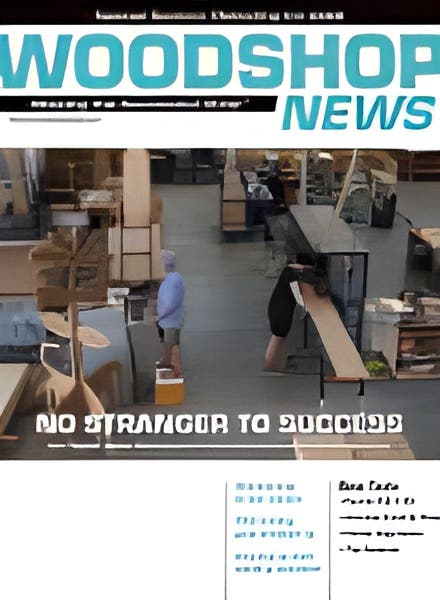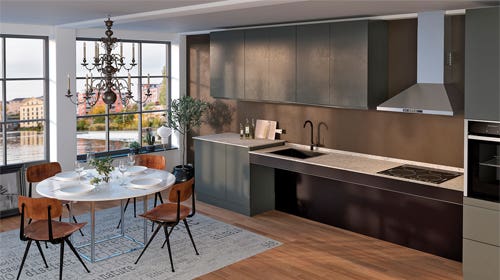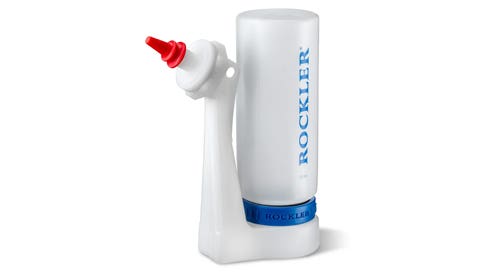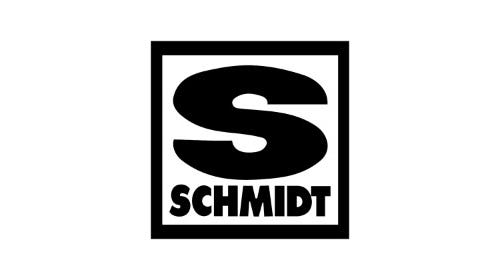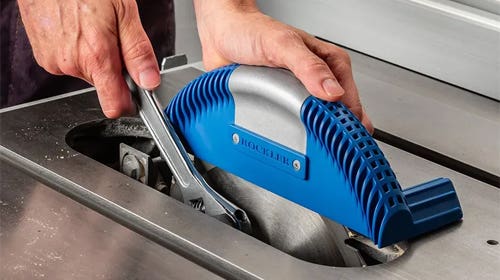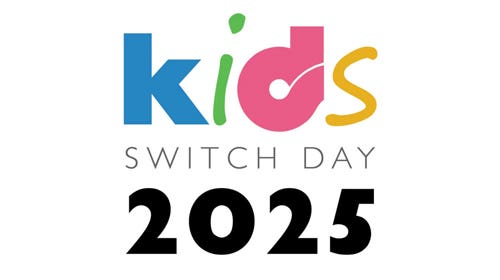Hickory Gets the Call for Countertops
Hickory is a popular choice for countertops, island tops, cabinets, and flooring due to its rustic appearance and color variations. Its hardness and tendency to warp make it challenging to work with, but it stains well and can be a cost-effective alternative to white oak. The demand for hickory remains steady, with a preference for the calico brown and white mix or heavy brown color.
Countertops are currently the number one project used with FAS and rustic hickory in recent months, according to suppliers interviewed by Woodshop News.
Different grades and color variations all add to the allure of the species, they say.
Steve Van Osdol, of Hickory & Oak Custom Sawmilling in Decatur, Mich., says he gets a lot of calls for hickory and that it’s been a pretty steady seller in recent years.
“What I sell a lot of hickory for is countertops, island tops, so typically the thicker stock in 8/4. The 4/4 doesn’t move as well, but people still use it to make cabinets or small woodworking projects,” says Van Osdol, who adds many of the hickory trees in his area are smaller and produce more of the calico look his customers are seeking.
“I’d say the rustic look it gives is probably it’s number one attribute, because a lot of people want a lot of stuff going on with color changes, even small knots, defects, things like that. Sort of like what you see with pine, but pine is pretty soft. So, with the hickory, it’s very hard and has a lot of color change between sapwood and heartwood.”
Dave Norman of Parkerville Wood Products in Manchester, Conn., says hickory has been extremely popular in the past six months.
“Mostly what we’re doing is for countertops, and we’ve literally got four going in the shop right now. One is for a guy’s showroom in more of a calico white/brown mix. Sometimes people want different things. The problem with history is it can be a real in-and-out wood. Some people fall in love with the heartwood, and that’s all they want. Some people choose it because it’s cheaper than white oak, and if they hit it with the right stain, they can make it look like white oak.”
Norman adds that while hickory has its positive attributes, it’s a very tricky wood.
“We say hickory is an angry wood. It can be really hard, and you have to go through a lot of wood usually to find what you’re looking for. If I have a project needing 100 board feet, I’ve got to bid 200 board feet because there’s going to be a lot of picking and choosing to get the right wood. Most hickory right now is a combination of several species. Pecan hickory is different from shagbark hickory, for example. Ours is a combination; you never know what you’re going to get. Some could be all heartwood, some could be all sap, and some could be a nice mixture of white and brown.”
Norman also points out that hickory stains very well compared to other hardwoods. It’s limited in size offerings, and not much thicker than 8/4, and usually not over 8” to 9” wide, and rarely over 12’ long. He says it also tends to warp more than any other wood and is very challenging to work with because of its hardness.
Chad Muterspaw of CR Muterspaw Lumber in Xenia, Ohio, says hickory has remained very steady over the years, and is popular for a variety of projects including countertops, cabinets and flooring.
“Hickory’s always been a good seller. I really haven’t seen any change for us. What we do with hickory, and what I’ve noticed a little bit, is more color sorting. So, we’ve got some customers that like the calico brown and white mix, and then we have seen a lot more inquiries about heavy brown,” says Muterspaw.
Originally published in the August 2025 issue of Woodshop News.

